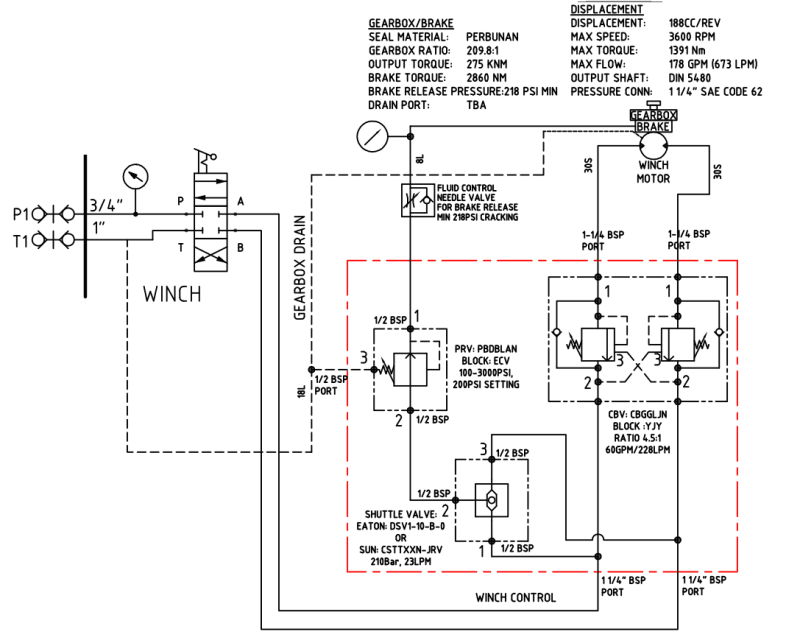i have a hydraulic motor with attached brake unit. this brake unit needs a min of 12bar pressure to release
the brake, upto a max pressure capacity of 30bar.
if i pipe in a feed thru a solenoid valve and then thru a pressure releif valve set at 20bar i think this would release the brakes. my issue is 1-will this not boil the oil when brakes are off for a long time?as pumping flow thru pressure releif constantly. 2-when the valve dumps then repressurises the system will this not cause a fast on off of the brakes in a repeating cycle? 3- is there anothere valve i need that controls the pressure specific to this kind of application?
thank you
the brake, upto a max pressure capacity of 30bar.
if i pipe in a feed thru a solenoid valve and then thru a pressure releif valve set at 20bar i think this would release the brakes. my issue is 1-will this not boil the oil when brakes are off for a long time?as pumping flow thru pressure releif constantly. 2-when the valve dumps then repressurises the system will this not cause a fast on off of the brakes in a repeating cycle? 3- is there anothere valve i need that controls the pressure specific to this kind of application?
thank you

